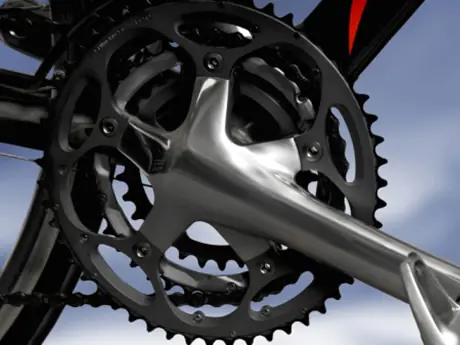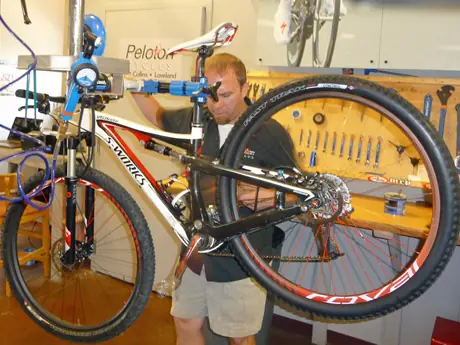Never raise a seat post higher than the limit line that is marked on the post. Raising a seat post past the limit line can result in the post breaking during a ride and can potentially lead to a bad crash. If the adjustment requires a longer post it may be that the frame size of the bike is too small for you. A trip to your local bike shop should help you to determine if your frame is the correct size.
You can sometimes purchase a longer seat post that will allow you to extend the post sufficiently and still be below the limit line. All you need to do is remove the seat from the original seat post and install your seat on the new post.
Saddle Fore and Aft Position
That brings us to our next adjustment, saddle position fore and aft. Bike saddles mount on a rail system that allow for adjustment forward and backward. Again, sitting evenly on your saddle without leaning to one side or the other, bring your outside pedal parallel with the ground.
More: How a Bike Fit Breaks Down Your Pedal Mechanics
Your helper can kneel down and move your pedal until it is parallel with the ground. Hold this position while your helper takes the string of the plumb bob and places it against the inside of your knee just behind your kneecap with the weight hanging down past the pedal. You will probably need to angle your knee in slightly so that the string hangs down freely without touching the pedal or crank arm.
A proper adjustment will have your knee tracking in line with the spindle of the pedal within 2 or 3 centimeters in front of or behind the spindle. If the plumb bob is way in front of the pedal spindle you will need to move the seat rearward on the rails, if it is way behind you will need to move the seat forward on the rails.
Once you determine the correct position you can retighten the seat clamp and fine-tune your final seat adjustment, saddle tilt.
More: A Daily, Weekly, Monthly and Yearly Bike Maintenance Checklist
Tilt or Angle of Saddle
A comfortable and correct saddle angle will have the seat level or one or two degrees angled up or down depending on personal preference. If you are not sure, start with a level seat, and if you decide to change the tilt make sure that you don't angle the seat more than a couple of degrees either way.
Most seats have two bolts that clamp down the rails. The angle can be adjusted by tightening the front or back bolts, depending on which way you want to tilt your saddle. And as with all other adjustments, a torque wrench is preferred when tightening bolts to make sure you tighten more than the manufacturer's specifications.
These basic adjustments can be done in a matter of a few minutes and will make your riding much more comfortable and efficient. A more complete bike fit can be purchased at your local bike shop by a trained bike fitter. Enjoy your riding and have fun!
More: Exercises to Treat Shoulder and Neck Pain from Cycling
 Ready to ride? Search for a cycling event
Ready to ride? Search for a cycling event- 2
- of
- 2








Discuss This Article